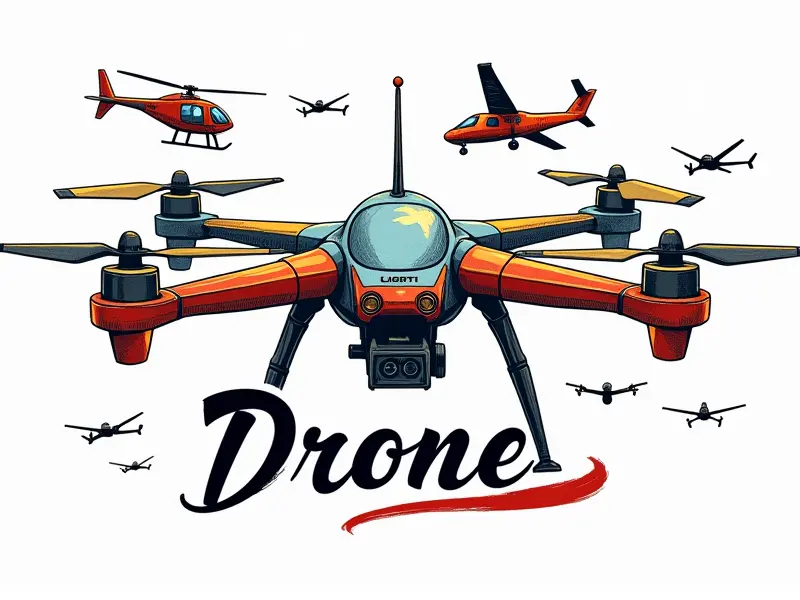How fast do FPV drones go?

How Fast Do FPV Drones Really Fly?
FPV (First Person View) drones have taken the world of aerial racing by storm, captivating enthusiasts and casual observers alike with their incredible speed and agility. But just how fast do these high-tech marvels really fly? In this article, we'll delve into the top speeds achieved by FPV drones, explore the factors that influence their velocity, and provide tips on boosting your drone's performance to reach its full potential.
Top Speed of FPV Racing Drones Revealed
The fastest FPV racing drones can achieve astonishing speeds. Modern quadcopters designed for competitive racing often exceed 100 mph (160 km/h), with some elite models pushing the boundaries even further. These top-tier machines are engineered to maximize aerodynamics and power output, allowing pilots to experience adrenaline-pumping flights.
Unleashing FPV Drone Speed Limits
The speed limits of FPV drones vary based on several factors including frame design, motor performance, propeller efficiency, and battery capacity. While the theoretical maximums can be impressive, practical limitations such as air resistance and structural integrity often dictate real-world speeds.
Frame Design
- Aerodynamic Frames: Sleek designs reduce drag and enhance speed.
- Lightweight Materials: Carbon fiber and other lightweight composites improve agility.
Motor Performance
- HIGH-KV Motors: High KV (Kilovolt) motors deliver more power for faster speeds.
- Battery Capacity: Higher capacity batteries provide sustained high-speed performance.
FPV Drone Racing: Speed Demons Explained
In the realm of FPV drone racing, speed is king. Pilots push their machines to the limit in pursuit of victory, navigating tight courses with split-second precision. The thrill of watching or participating in an FPV race is unparalleled, as these drones zip past at breakneck speeds.
Key Components for Speed
- High-Performance ESCs: Electronic Speed Controllers (ESCs) manage motor power efficiently.
- Advanced Propellers: Custom-designed propellers optimize thrust and efficiency.
The Fastest FPV Drones in Action
To truly appreciate the speed of FPV drones, watching them in action is a must. Videos and live streams showcase these machines reaching incredible velocities as they navigate through challenging courses. The agility and responsiveness of top-tier racing drones are awe-inspiring.
Notable Models
- RacingRaven X2: Known for its high-speed capabilities and robust design.
- TBS Discovery 4: A versatile quadcopter with impressive speed and maneuverability.
Achieving Maximum Speed in FPV Drones
To achieve maximum speed, it's crucial to optimize every aspect of your FPV drone. This includes selecting the right components, fine-tuning settings, and maintaining peak performance through regular maintenance.
Optimizing Components
- Select High-Quality Motors: Opt for high KV motors with superior build quality.
- Upgrade Propellers: Use custom propellers designed for maximum efficiency and thrust.
Boosting Speed in Your FPV Drone
If you're looking to boost the speed of your FPV drone, consider these tips:
Tuning Settings
- Adjust PIDs: Fine-tune pitch, roll, and yaw settings for optimal stability.
- Increase Throttle Curve: Adjust the throttle curve to deliver more power at higher speeds.
Factors Affecting FPV Drone Speed
A variety of factors can influence the speed of your FPV drone, including environmental conditions and component choices. Understanding these variables is key to maximizing performance.
Environmental Factors
- Wind Conditions: Strong winds can significantly impact flight stability and speed.
- Air Density: Altitude affects air density, which in turn influences drone performance.
Breaking the Sound Barrier with FPV Drones
The concept of an FPV drone breaking the sound barrier might seem far-fetched, but advancements in technology continue to push boundaries. While current models are unlikely to reach such speeds due to physical limitations, future innovations could make this a reality.
Future Prospects
- Nanotechnology: Smaller components and lighter materials may enable faster speeds.
- Sustainable Propulsion: New propulsion methods could offer greater efficiency and power.
Max Speed of Modern FPV Racing Quads
The max speed of modern FPV racing quads is a testament to the rapid advancements in drone technology. With cutting-edge designs and powerful components, these drones can reach speeds exceeding 150 mph (240 km/h) under optimal conditions.
Performance Metrics
- Aerodynamic Efficiency: High-efficiency frames reduce drag for faster flight.
- Battery Power: Advanced battery technology provides sustained high-speed performance.
The Fastest FPV Drones in 2025
In 2025, several models stand out as the fastest FPV drones available. These top-tier machines offer unparalleled speed and agility, making them a favorite among competitive pilots and enthusiasts alike.
Top Models of 2025
- RacingRaven X2 Pro: An upgraded version with enhanced performance features.
- TBS Discovery 5: A new model offering improved speed and maneuverability.
Conclusion
The world of FPV drone racing is a thrilling spectacle, showcasing the incredible speeds these machines can achieve. From sleek aerodynamic designs to powerful propulsion systems, every aspect contributes to their breakneck velocities. Whether you're an aspiring pilot or simply fascinated by high-tech marvels, understanding the factors that influence FPV drone speed provides valuable insights into this exhilarating hobby.

